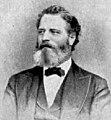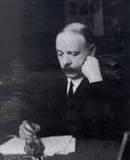Planning worship?
Check out our sister site, ZeteoSearch.org,
for 20+ additional resources related to your search.
- |
User Links
Person Results
Walter Bond Gilbert

1829 - 1910 Composer of "" in Hymnal Walter Bond Gilbert DMus United Kingdom 1829-1910. Born at Exeter, Devon, England, he studied music under Alfred Angel, Samuel Wesley and Henry Bishop. He attended New College, Oxford and the University of Toronto, Canada. He was organist in Devon at Topsham in 1847, Bideford in 1849, Kent at Tonbridge in 1854, Old Colliegiate Church, Maidstone in 1859, Lee in 1866, Boston, Lincolnshirein 1868, and Trinity Chapel in New York City in 1869-1897. He taught music at Tonbridge School, helped found the College of Organists, edited the America Episcopal Hymnal, and wrote a number of monographs, including “Antiquities of Maidstone”. He continued to write church music, producing services, oratorios (including “The Restoration of Israel and St. John, 1857), organ works, and anthems. He died at Headington, Oxford, England.
John Perry
Walter Bond Gilbert
Johannes Matthaeus Meyfart
1590 - 1642 Person Name: Johann M. Meyfart Author of "Jerusalem! high tower thy glorious walls" in The Hymnal Meyfart, Johann Matthäus, was born Nov. 9, 1590 at Jena, during a visit which his mother (wife of Pastor Meyfart of Wablwinkel, near Waltershausen, Gotha) was paying to her father. He studied at the Universities of Jena (M.A. 1611; D.D. 1624) and Wittenberg, and was thereafter for some time adjunct of the philosophical faculty at Jena. In 1616, he was appointed professor in the Gymnasium at Coburg and in 1623 director; and during his residence at Coburg was a great moral power. When his colleagues in the Gymnasium made a complaint to the government regarding a dissertation (De disciplina ecclesiastica) which he published in 1633, he accepted the offer of the professorship of theology in the revived University of Erfurt. He entered on his work at Erfurt, July, 1633, was rector of the University in 1634, and in 1636 became also pastor of the Prediger Kirche. He died at Erfurt, Jan. 26, 1642 (Koch iii. 117; Allgemeine Deutsche Biographie xxi. 646, &c.).
Meyfart's devotional works (Tuba poenitentiae prophetica, 1625; Tuba Novissima, 1626; Höllisches Sodoma, 1629; Himmlisches Jerusalem, 1630; Jüngste Gericht, 1632) passed through various editions, and produced a great impression by their vivid picturing and their earnest calls to repentance and amendment of life. His well-meant efforts, by books and otherwise, towards raising the tone of student life in Germany, and his exposition of the excesses and defects in both academical and churchly life at that period, brought him much ill will and opposition, and did not produce useful fruit till much later. His hymns were few in number, and appeared mostly in his devotional books.
Only one of Meyfart's hymns has passed into English, viz. :—
Jerusalem, du hochgebaute Stadt. The New Jerusalem. This splendid hymn appeared in his Tuba Novissima, Coburg, 1626 [Ducal Library, Gotha], a volume containing four sermons preached at Coburg on the Four Last Things, viz. Death, Last Judgment, Eternal Life, and Eternal Punishment. It forms the conclusion of the third sermon (on St. Matt. xvii. 1-9) which is entitled "On the joy and glory which all the Elect are to expect in the Life everlasting." This conclusion is reprinted verbatim et literatim (i.e. with the introductory and closing sentences, and the connecting sentences between st. i., ii., iii. and iv.) in the Blätter für Hymnologie, 1883, pp. 120-124. The text of the hymn, in 8 st. of 8 1., is given unaltered, according to the marginal directions of the original (save st. vii. 1. 6, where the original is "Man spielt"), as No. 1537 in the Berlin Geistliche Lieder ed. 1863. Of it Lauxmann, in Koch viii. 669, says:—
"The hymn is a precious gem in our Treasury of Song, in which one clearly sees that from it the whole heart of the poet shines out on us. Meyfart had his face turned wholly to the Future, to the Last Things; and with a richly fanciful mysticism full of deep and strong faith, he united a flaming zeal for the House of the Lord, and against the abuses of his times."
He adds that the hymn was a great favourite with Charles Gützlaff, the apostle of China (died at Hong Kong, Aug. 9, 1851), whose last words were "Would God I were in thee" (st. i. 1. 3) ; and of Julius Schnorr of Carolsfeld, the well-known painter, whose last work was the illustrating of this hymn, and at whose funeral in 1872 it was sung. The popularity of the hymn was greatly aided by the magnificent melody, generally ascribed to Melchior Franck [born at Zittau, 1580 ; c. 1604, capellmeister at Coburg; died at Coburg, June 1,1639], but not yet traced earlier than to the Erfurt Gesang-Buch, 1663.
Translations in common use:—
1. Jerusalem, thou city built on high. A good tranlation of st. i.-iv., vii., as No. 112 in the Dalston Hospital Hymn Book, 1848.
2. Jerusalem, thou city built on high. A good translation of st. i., iv., vi., vii., by A. T. Russell, as No. 261 in his Psalms & Hymns, 1851. St. i., 11. 1, 2, 4 are from the 1848 translation. The form in Dr. Pagenstecher's Collection, 1864, No. 288, is i. 11. 1-4, ii. as 1848; i. 11. 5-8, vii. as 1851.
3. Jerusalem, thou city fair and high. A good and full translation by Miss Winkworth, in her Lyra Germanica, 2nd Ser., 1858, p. 220; repeated in her Chorale Book for England, 1863, No. 193, set to the melody of 1663. Included in full in the Ohio Lutheran Hymnal, 1880, and, abridged, in the Pennsylvania Lutheran Church Book, 1868, and the Uppingham and Sherborne School Hymn Book, 1874.
4. Jerusalem! high tow’r thy glorious walls. A good and full translation, by Bishop W. R. Whittingham, in the American Episcopal Hymns for Church and Home, 1860, No. 414; and the American Episcopal Hymnal, 1871. St. i., iv., viii. are in M. W. Stryker's Christian Chorals, 1885.
Translations not in common use:—
(l) "Jerusalem, thou city of the skies." In the United PresbyterianJuvenile Mission Magazine, Dec. 1857. (2) "Jerusalem! thou glorious city-height." By Mrs. Sevan, 1858, p. 19, repeated in L. Rehfuess's Church at Sea, 1868. (3) “Jerusalem, thou high-built, fair abode." In the Christian Examiner (Boston, U. S.), Sept. 1860, p. 254. (4) "Jerusalem, thou city rear'd on high. By Miss Manington, 1863, p. 94. (5) "Jerusalem! thou city towering high." By Miss Cox, in her Hymns from the German, 1864, p. 101, and in Lyra Mystica, 1865, p. 365. (6) "Jerusalem! thou city builded high." By Miss Burlingham, in the British Herald, April, 1866, p. 249, and Reid's Praise Book, 1872. (7) "Jerusalem! high tow'r thy glorious walls." A full and spirited translation by J. H. Hopkins, in his Carols, Hymns and Songs, 1882, p. 182, dated 1862. St. i., 11. 1-2, are taken from Bishop Whittingham's version. [Rev. James Mearns, M.A.]
-- John Julian, Dictionary of Hymnology (1907)
Johannes Matthaeus Meyfart
Horatio W. Parker
1863 - 1919 Person Name: Horatio Parker Composer of "WHITTINGHAM" in The Hymnal
Horatio W. Parker
Melchior Franck
1559 - 1639 Person Name: Melchior Frank Composer of "JERUSALEM, DU HOCHGEBAUTE STADT" in Carols, Hymns, and Songs Melchior Franck; b. about 1580, Zittau, Germany; d. 1639, Coburg, Germany
Evangelical Lutheran Hymnal, 1908
Melchior Franck
William Rollinson Whittingham
1805 - 1879 Person Name: William R. Whittingham Translator of "Jerusalem! high tower thy glorious walls" in The Hymnal Whittingham, William Rollinson, D.D., LL.D., was born in New York, Dec. 2, 1805. He received his early education from his mother, and subsequently graduated at the General Theological Seminary, New York, 1825. He was for some time Rector of St. Mark's, Orange, New Jersey; then of St. Luke's, New York; and afterwards Professor of Ecclesiastical History in the General Seminary, N. Y., 1835. In 1840 he was consecrated Bishop of Maryland, and died in 1879. For talent, learning, and character, Bishop Whittingham is allowed to be one of the great American Bishops, if not the greatest. His contributions to hymnology were Specimens of a Church Hymnal, Baltimore, Dec. 1865, and two translations from the German, which appeared in Hymns for Church and Home, 1859. [Rev. F. M. Bird, M.A.]
-- John Julian, Dictionary of Hymnology (1907)
William Rollinson Whittingham


 My Starred Hymns
My Starred Hymns



